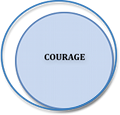Impact Dialogues
- Objective: To establish and understanding of women’s empowerment and see how CARE’s projects have interacted with women’s empowerment in the past as well as how the organization can improve its work to support women’s empowerment moving forward.
- Materials/Preparation: The research team worked together to develop questions as a group and prioritize a final list of questions.
- Participants: Women and men, adolescent boys and girls as well as children in communities where CARE works.
Steps
In communities, the research teams use the questions identified as a topic guide for focus group discussions. Groups are gender and age segregated and could be further divided by well-being, ethnicity or levels of participation, as appropriate.
In northern Uganda, the teams asked:
- What are the main problems facing women in this camp?
- Probe→ for elements of women’s disempowerment
- What does women’s empowerment mean to you?
- What are the factors that prevent or promote women’s empowerment?
- Probe→ for cultural, political, social, economic, and traditional factors
- How can you tell that a woman is empowered?
- Probe→ for indicators, such as whether women are in leadership positions, control decision-making, allocate resources, or own assets
- What interventions can be done to empower women in this community?
- CARE has been in Gulu for a long time now. How have women benefited from its projects?
- For women: Are any of you involved in a women’s group or CBO?
- If yes: How was the group formed (i.e. by a larger organization of by the community members themselves)? What are the benefits of participating in this group? Has your participation affected your position in society or made you feel more or less empowered
- Probe→ (if yes) How have things changed?
- Probe→ How could the group be changed to better promote women’s empowerment?
- If no: Do you think participation in a women’s group or CBO could increase women’s sense of empowerment? How?
- For men: How do you feel about women participating in women’s groups or CBOs? Does their participation in these groups affect their position in society or the way others view them? Do you think participation in a women’s group could increase women’s sense of empowerment? How?
- If yes: How was the group formed (i.e. by a larger organization of by the community members themselves)? What are the benefits of participating in this group? Has your participation affected your position in society or made you feel more or less empowered
- How can CARE improve its programs so as to better empower women?
At the end of each day of the study, the research team met to reflect upon and analyze responses and observations across groups as well as share challenges and adaptations for the following day. After the study, teams analyzed responses to identify CARE’s strengths and weaknesses in supporting women’s empowerment as well as develop recommendations and next steps.
This can help identify changes across multiple domains over time.
Variation: Venn Diagram
To work with groups to analyze levels of empowerment, teams may use venn diagrams to visually document perceived areas of change. To do this, the facilitator noted down each dimension of change reported within the group. Next to the dimension, facilitators placed percentages or fractions to note what percent of the group reported that specific type of change. On a piece of paper with a large circle on it to represent the group, the facilitator then drew a circle (or pie chart) to illustrate what portion of the group identified with the change.
For example, if 75 percent of the group felt that courage has been the most significant change in the lives of women, the facilitator would draw a circle within the paper that encompasses only 75 percent of the space.
As a group, Venn Diagrams may help participants to analyze together, which changes have been the most significant within the group, and which dimensions of women’s empowerment have not seen any change, as well as discuss why this may be.

Related Tools
View more tools related to:
Resources
- M Drinkwater (2010). Program Design Simulation Exercise: Program Approach Workshop for the Middle East: Amman.
- D Wu (2010). CARE International in Uganda: Women and Girls of Reproductive Age Affected by Conflict. Draft Programme Design Document
